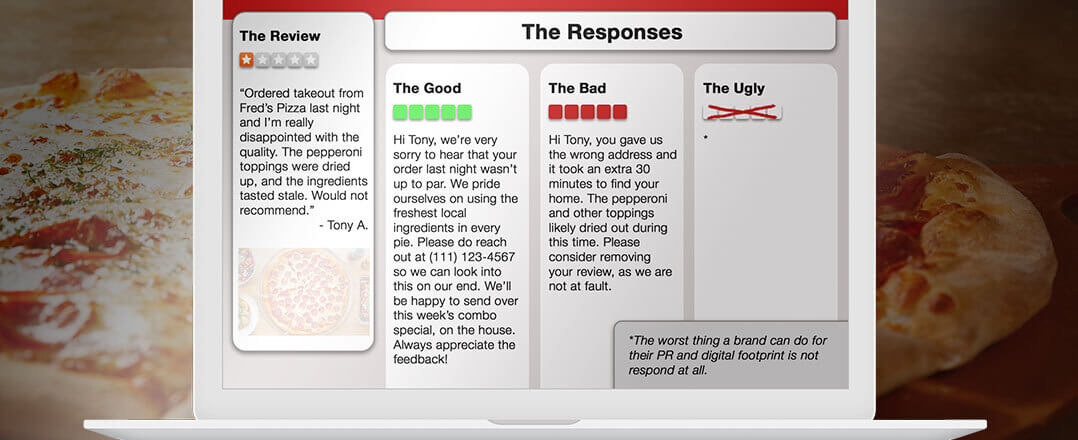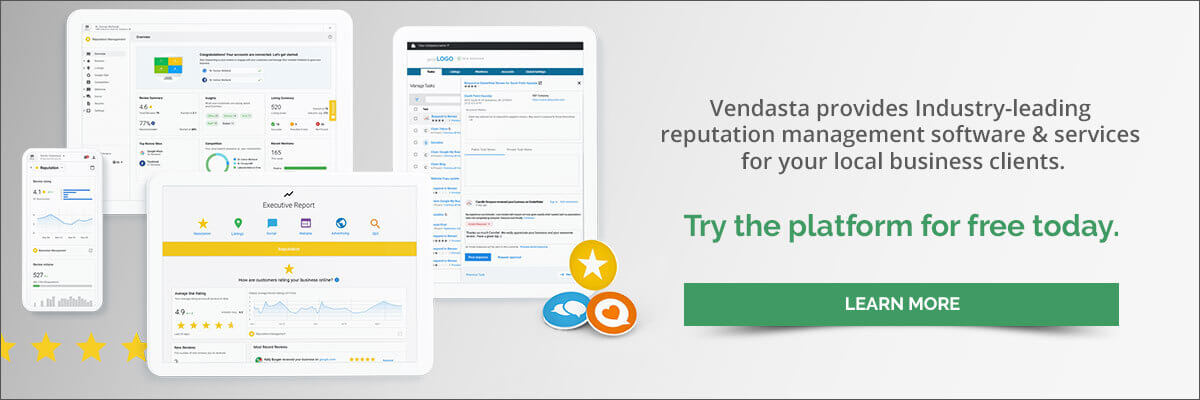Digital PR: How traditional public relations tactics improve integrated marketing strategies
Audience interactions with a brand strongly influence how they feel about that business. It can build or break brand trust and sets the tone for the relationship that audience will have with a brand moving forward. By using traditional public relations principles and adapting them for the online space, businesses can strengthen their digital marketing strategies. Digital PR helps fine tune the customers perception of a business, builds brand awareness, and reduces churn.
What is Public Relations?
According to the Public Relations Society of America, Public relations is a strategic communication process that builds mutually beneficial relationships between organizations and their publics. PR can look like many different things. An interaction between a clerk and customer at their place of business, a company thought leader chiming in on a industry topic through a local podcast or a social-media manager responding to a recent Facebook review are all great examples of real-world interactions where public relations should be at play.
Why Good PR Matters
A well executed public relations plan will help your clients:
- Gain trust: Sharing the story through third-party sources offers credibility to your client's brand.
- Build authority: Good PR positions your customer's brand as a trusted advisor in their industry.
- Grow traffic: Mentions on news, industry and social sites help to boost search authority and online ranking, driving more eyes back to the brand’s story.
Understanding Your Audience
By nailing down who it is you’re trying to reach, you can target your client's brand messaging at every level. This ensures that their customers, brand ambassadors and industry groups receive the same impression of the brand, product, or service regardless of where those interactions take place.
“First you need to clearly understand who you are talking to. From there, as you build that brand reputation, the foundation will continue to serve you,” says Vendasta Director of Corporate Marketing & Communications, Dani Mario.
“There are two key audience amplifiers you should be targeting. In the traditional PR stream you’re setting your sights on getting that message out to the news media. Secondly, and I’d argue even more importantly today, you’re looking to digitally target an audience online with social virality as the end goal,” Mario says.
Telling a Great Story
Now that we’ve identified who it is we are trying to reach, we need to define the story we’re trying to share. Most times a story worth amplifying:
- Exists at a point in time - is your story tied to an event or does it align with an accepted public agenda?
- Matters to many people - your target audience needs to feel like they are receiving valuable or interesting information
- Has a hero - includes a character with whom the audience can identify or feel endeared towards
- Has heart - memorable stories are born from an emotional connection with the content
Identifying these elements as they relate to your client's brand will help inform tone, messaging, and communication strategy down the line.
Digital PR Tactics That Work
Tick off Key Motivators
Seasoned journalist and author of Aim for the Heart, Al Tompkins, outlines five key motivators in his work that can ensure your client's brand story connects with the largest audience. These motivators include:
- Money
- Health
- Family
- Safety
- Community
When crafting your client's brand story try to link to as many of these components as possible. Does the brand or product help save the audience time and money? Does it use technology to keep people safe? Does the business model impact a person’s health or quality of life? These are all elements that touch close to home for an audience and you’ll guarantee buy-in by identifying how these motivators might intersect with your client's brand in the campaign development stages.
Manage Listings
Nothing can tarnish a relationship with a customer faster than inaccurate online listing information. Imagine it’s Sunday, a customer searches for a clothing boutique on Google and a store in their area comes up. That customer then spends 10 minutes reading other customer reviews, 20 minutes getting ready to leave and 15 minutes driving to the boutique location. Once they arrive they find a sign on the shop entrance saying they are closed for renovations, even though the online listing stated the shop was open 12pm to 6pm. It’s not an experience you would want any customer to have with your client's brand. By the time that customer returns home they’ve wasted an entire hour out of their day off to visit a business that wasn’t even open. Keeping your client's listings up to date with tools like Vendasta’s Listing Builder, makes for a smart smart business practice and good PR.
Position Your Client as the Expert
According to a Nielsen study, 92 percent of consumers trust earned media. Hop on Twitter or LinkedIn and pitch your client as the local authority on hot topics. You can reach out to news reporters, freelancers writing for industry magazines, podcasters or bloggers in your area. Even if they don’t get back to you on that day - they may follow up in the future when the right headline comes along. Having this third-party syndication goes a long way towards building trust with your client's audience and grows the brand's search-engine authority.
Lean on a press release as a tool and a vehicle of background information, rather than your only vehicle to reach media and other third party sources. In the newsroom, even well-written and relevant press releases are plentiful and your message will easily get lost in the noise. By making the effort to directly reach out to the individuals you want to tell your client's story, you’ll have a better chance of success. Attach your press release to a pitch email or send a link in a private message, but be sure to take time to craft a personalized message that shows the value of your angle to a broader audience.
You can also position your client as an expert through a tool called HARO. Whether you're creating blogs for a brand and looking for an external expert to weigh in, or you’re pitching the client's story to journalists the HARO platform is a great option. Monitor the account daily for source requests and pitch your expert with a bio and background info. The reporter will reach out directly if your expert fits the bill.
Strategically Respond to Reviews
There’s a right and a wrong way to respond to customer reviews. Here are a few fast and hard rules you can recommend to your clients:
- Respond to every review, every time. It can be difficult to craft the appropriate response to a review, especially one that might not paint the brand in the best light. By responding to everyone, every time, it shows the audience you care about feedback and opens the lines of communication. Reputation management tools can help clients keep track of reviews that still need attention.
- In the case of a negative review, the customer is most often looking to be heard. Their interaction with the brand did not meet expectations and they’re often frustrated with the outcome of that interaction. In response, be sure to acknowledge and validate their viewpoint, and make the effort to connect with them directly to try and resolve the issue.
- Reward a customer who left a positive review with a surprise and delight gesture. Once a month select your favorite review and reach out to that customer or client with a gift card, a handwritten note or even a discount code thanking them for their ambassadorship and positive feedback.
- Encourage local business customers to leave reviews. Whether it’s through signage inside the business, in a company email signature or in a series of social media posts that go up on a monthly cadence. Remind customers that a Google Business Profile (GBP) account exists and to leave you a review.
Here’s a sample of how you can respond to a negative review for your own brand or a client’s account.

Organic Social Media Amplification
Although aunt Sally may not be the trusted local authority with a large digital and broadcast audience tuning in, she is trusted within her own circle. According to a Nielsen report, 83 percent of people trust recommendations from someone they know. If Sally shares your client's Facebook post, or Ted, a former colleague, links to your client's article in his LinkedIn post, third-party syndication is happening on a micro but powerful level. Chances are if Sally and Ted found the content posted on your client's interesting or relevant their circles will, too, with a result of growing re-share potential and organic traffic to your client's social accounts and website.
Event Hosting
Even though a large in-person conference, workshop or event may not be feasible, it shouldn’t stop brands from being creative and leveraging this traditional PR tactic in an online space. Virtual events can still help brands build awareness, increase website traffic and reward current clients. Recommend your client's host a one-hour complimentary session on a monthly basis. They can recreate a community town hall virtually to get feedback and exchange ideas or workshop a skill with an invited expert on video call. The event should have a great level of value for attendees beyond just a sales pitch for a product or service. The session should always end on a clear and concise call to action to ensure your client is achieving their goals.
Creating Brand Advocates
As customers travel further along in their journey with your client's brand, each and every interaction forms that relationship and affects how they feel about what your client does. Good PR goes hand in hand with creating goodwill, and where there’s ongoing goodwill there’s brand loyalty. It’s that loyalty and faith in the product or service that helps reduce churn and even spark advocacy. By leveraging good PR to build trust, authority and traffic each and every time you put a piece of your client's story out into the world, you’re creating lasting brand advocates. Recommendations, reviews, word-of-mouth referrals and online engagement are all measurable and powerful tools that can help your clients succeed.


